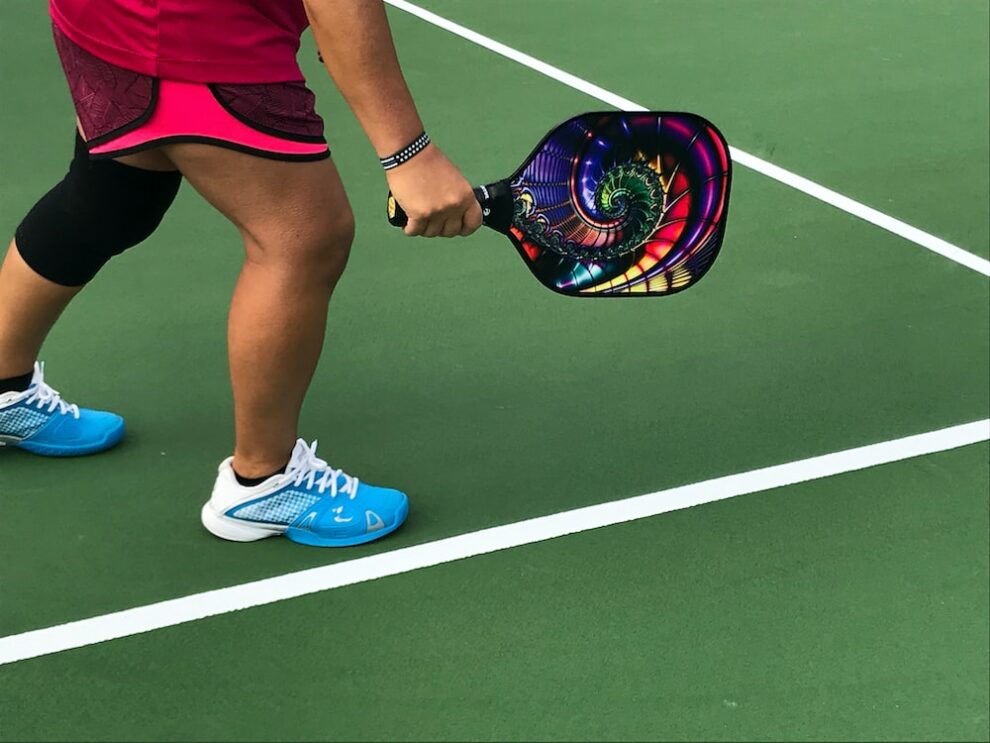Pickleball, a rapidly growing recreational sport that combines elements of tennis, badminton, and ping-pong, has captured the hearts of enthusiasts of all ages. As the sport gains popularity, players are seeking ways to elevate their performance and dominate the court. While skill development and strategy play pivotal roles, the significance of equipment should not be underestimated. Among the various components that contribute to a player’s success, the paddle grip stands out as a critical factor in enhancing control, precision, and overall gameplay.
The Fundamentals of Pickleball Paddle Grips
Pickleball paddle grips come in different variations, each affecting how a player holds and maneuvers the paddle. Traditional grips, such as the Eastern, Western, and Continental grips, have been staples in the game. However, these grips can pose challenges in terms of control and comfort over extended periods of play. This brings us to the emergence of ergonomic paddle grips – a game-changer that provides players with a more natural and comfortable way to hold the paddle.
The Evolution of Ergonomic Paddle Grips
In recent years, sports equipment design has taken a significant leap forward, with a growing emphasis on ergonomic design. Ergonomic paddle grips have revolutionized the way players experience the game. These grips are thoughtfully crafted to cater to the human hand’s natural contours, ensuring a snug fit that reduces strain and enhances overall comfort. This is achieved through a combination of features, including a contoured shape, cushioned padding, and advanced materials that absorb sweat and prevent slippage. The evolution from traditional grips to ergonomic ones represents a paradigm shift in pickleball equipment, prioritizing both performance and player well-being. For those interested in enhancing their pickleball experience, consider upgrading to an ergonomic paddle grip – buy $13.99.
Benefits of Upgrading to an Ergonomic Paddle Grip
The decision to transition to an ergonomic paddle grip can yield a multitude of benefits for pickleball players of all skill levels:
Improved Control and Precision: An ergonomic grip facilitates a more secure hold on the paddle, enabling players to exert greater control over shots. The enhanced grip translates to improved precision, allowing players to execute spin shots, volleys, and serves with greater accuracy.
Reduced Risk of Injuries and Fatigue: Traditional grips can lead to hand fatigue and strain, particularly during extended gameplay. Ergonomic grips address this issue by providing cushioned support and reducing the risk of common injuries such as tennis elbow and wrist strain.
Enhanced Comfort and Extended Gameplay: Comfort is key to enjoying any sport, and ergonomic grips excel in this aspect. The contoured design and cushioned padding offer players a more comfortable experience, enabling them to play longer without discomfort.
Consistency in Shots and Overall Technique: With a secure and comfortable grip, players can focus on refining their technique and achieving consistency in their shots. The ergonomic grip minimizes grip adjustments during play, leading to a more fluid and efficient gameplay experience.
Numerous players who have made the switch to an ergonomic grip attest to its transformative impact on their performance. Jason Miller, an avid pickleball player, shares his experience, “The ergonomic grip changed the way I play the game. My shots are more controlled, and I can play for hours without experiencing hand fatigue.”
Choosing the Right Ergonomic Paddle Grip
Selecting the appropriate ergonomic paddle grip involves careful consideration of several factors:
Paddle Size and Compatibility: Different paddles have varying sizes and shapes, and it’s essential to choose an ergonomic grip that aligns with your paddle’s specifications.
Grip Thickness and Texture Preferences: Ergonomic grips come in various thicknesses and textures. Some players may prefer a thicker grip for added cushioning, while others may opt for a smoother texture. Experimentation is key to finding the grip that suits you best.
Adjusting to the Transition: Moving from a traditional grip to an ergonomic one requires an adjustment period. Players should be patient during this phase, allowing themselves time to adapt to the new grip’s feel and mechanics.
Expert insights from pickleball coaches and professionals offer valuable guidance during this selection process. Coach Sarah Johnson advises, “When choosing an ergonomic grip, it’s important to prioritize comfort and compatibility with your playing style. Take your time to test different options and assess how they enhance your gameplay.”
Tips for Adjusting and Mastering the Ergonomic Grip
Adapting to an ergonomic grip necessitates a deliberate approach to practice and skill development:
Gradual Adaptation and Practice Techniques: Begin by incorporating the ergonomic grip into your practice sessions. Gradually increase its usage to build muscle memory and familiarity.
Proper Hand Placement and Positioning: Ensure your hand is correctly positioned on the grip. The ergonomic design encourages a more natural hand alignment, minimizing strain and optimizing control.
Drills to Enhance Muscle Memory: Engage in drills that focus on specific shots and movements while using the ergonomic grip. This approach will help develop muscle memory and comfort over time.
Jessica Williams, a competitive pickleball player, shares her journey, “Switching to an ergonomic grip was a game-changer for me. I spent dedicated time on drills and practice, and the payoff in terms of comfort and control has been incredible.”
Frequently Asked Questions about Ergonomic Paddle Grips
Addressing common concerns and misconceptions can provide clarity for players considering the switch:
Impact on Gameplay and Performance: Players often wonder if an ergonomic grip will truly impact their gameplay. The enhanced control and comfort provided by ergonomic grips can indeed lead to improved performance and a more enjoyable experience on the court.
Downsides and Challenges: While ergonomic grips offer numerous advantages, some players might initially find the transition challenging. However, with consistent practice and patience, these challenges can be overcome.
Conclusion
The journey from traditional pickleball paddle grips to ergonomic ones marks a significant step toward improving gameplay and overall enjoyment. As players increasingly recognize the benefits of ergonomic designs, the pickleball landscape is witnessing a shift in equipment preferences. The combination of enhanced control, reduced strain, and heightened comfort fosters an environment where players can unlock their full potential. Embracing the ergonomic paddle grip is not merely an upgrade; it’s a transformative experience that empowers players to dominate the court with confidence and finesse. So, whether you’re a casual player seeking a more comfortable grip or a competitive enthusiast striving for mastery, the ergonomic paddle grip is a decision that can revolutionize your pickleball journey.














